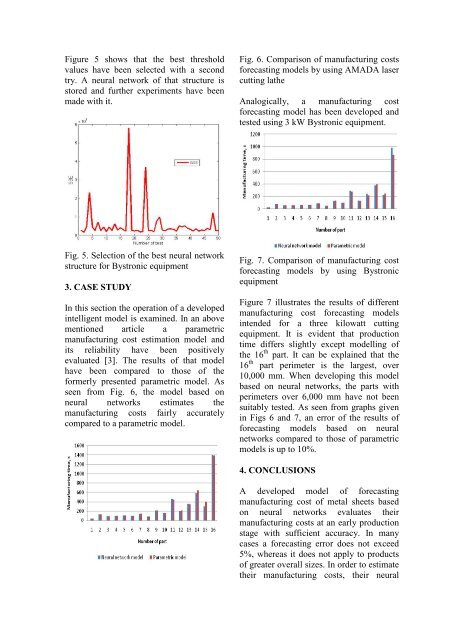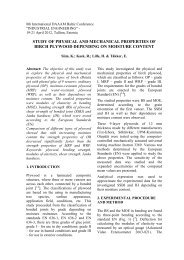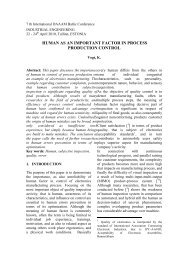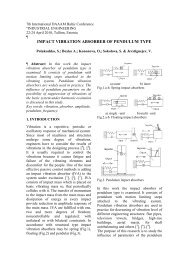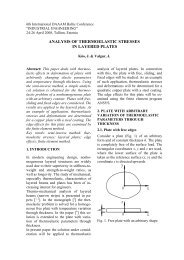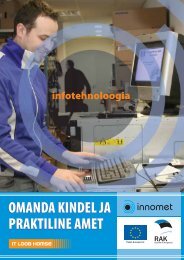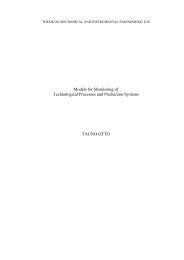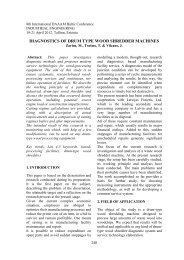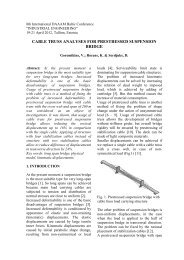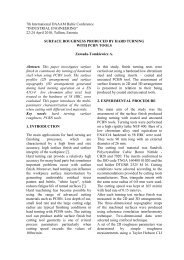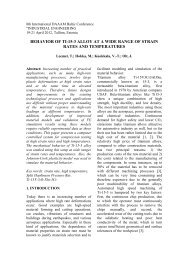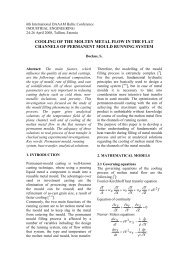Development of Intelligent Model for Estimating Manufacturing Cost ...
Development of Intelligent Model for Estimating Manufacturing Cost ...
Development of Intelligent Model for Estimating Manufacturing Cost ...
You also want an ePaper? Increase the reach of your titles
YUMPU automatically turns print PDFs into web optimized ePapers that Google loves.
Figure 5 shows that the best threshold<br />
values have been selected with a second<br />
try. A neural network <strong>of</strong> that structure is<br />
stored and further experiments have been<br />
made with it.<br />
Fig. 6. Comparison <strong>of</strong> manufacturing costs<br />
<strong>for</strong>ecasting models by using AMADA laser<br />
cutting lathe<br />
Analogically, a manufacturing cost<br />
<strong>for</strong>ecasting model has been developed and<br />
tested using 3 kW Bystronic equipment.<br />
Fig. 5. Selection <strong>of</strong> the best neural network<br />
structure <strong>for</strong> Bystronic equipment<br />
3. CASE STUDY<br />
In this section the operation <strong>of</strong> a developed<br />
intelligent model is examined. In an above<br />
mentioned article a parametric<br />
manufacturing cost estimation model and<br />
its reliability have been positively<br />
evaluated [3]. The results <strong>of</strong> that model<br />
have been compared to those <strong>of</strong> the<br />
<strong>for</strong>merly presented parametric model. As<br />
seen from Fig. 6, the model based on<br />
neural networks estimates the<br />
manufacturing costs fairly accurately<br />
compared to a parametric model.<br />
Fig. 7. Comparison <strong>of</strong> manufacturing cost<br />
<strong>for</strong>ecasting models by using Bystronic<br />
equipment<br />
Figure 7 illustrates the results <strong>of</strong> different<br />
manufacturing cost <strong>for</strong>ecasting models<br />
intended <strong>for</strong> a three kilowatt cutting<br />
equipment. It is evident that production<br />
time differs slightly except modelling <strong>of</strong><br />
the 16 th part. It can be explained that the<br />
16 th part perimeter is the largest, over<br />
10,000 mm. When developing this model<br />
based on neural networks, the parts with<br />
perimeters over 6,000 mm have not been<br />
suitably tested. As seen from graphs given<br />
in Figs 6 and 7, an error <strong>of</strong> the results <strong>of</strong><br />
<strong>for</strong>ecasting models based on neural<br />
networks compared to those <strong>of</strong> parametric<br />
models is up to 10%.<br />
4. CONCLUSIONS<br />
A developed model <strong>of</strong> <strong>for</strong>ecasting<br />
manufacturing cost <strong>of</strong> metal sheets based<br />
on neural networks evaluates their<br />
manufacturing costs at an early production<br />
stage with sufficient accuracy. In many<br />
cases a <strong>for</strong>ecasting error does not exceed<br />
5%, whereas it does not apply to products<br />
<strong>of</strong> greater overall sizes. In order to estimate<br />
their manufacturing costs, their neural


